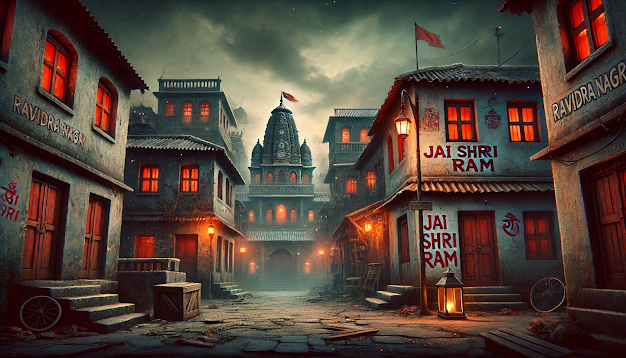Mass Suicides and the Wrath of a Goddess: The Story of Ravindra Nagar
The Mystery of Ravindra Nagar: Unraveling Belief, Fear, and Folklore
Ravindra Nagar in Hyderabad has gained a reputation as one of the most eerie localities in the city, steeped in tales of tragedy, curses, and supernatural events. At the heart of this haunting lore lies the series of suicides reported in 2012, a tragedy that many residents have since linked to the demolition of a local temple. This blog explores the intersection of history, belief, and psychology that shaped the unsettling narrative of Ravindra Nagar.
The Tragedy That Sparked the Legend
In 2012, multiple suicides occurred within the Ravindra Nagar community, a fact that is well-documented. However, the reasons for these tragic events remain murky. Speculation grew when locals began associating the deaths with the wrath of a goddess, supposedly angered by the demolition of her temple in the area. This belief gained traction as residents recounted experiencing strange occurrences, which further entrenched the idea of a divine or paranormal cause.
A Community in Fear
The fear of a supposed curse engulfed Ravindra Nagar. Superstitions flourished as residents took precautionary measures to "ward off" evil. Many painted "Jai Shri Ram" on their walls and doors, believing it would protect them from harm. The streets emptied after dark, with residents adhering to self-imposed curfews. Some families even sought refuge in nearby temples, while others abandoned their homes altogether.
Superstition or Social Psychology?
The events in Ravindra Nagar reveal how communities interpret unexplained tragedies. From a sociological perspective, such stories often arise in environments where fear is high, and factual clarity is low. The belief in divine punishment or paranormal activity may serve as a way for people to make sense of misfortunes that otherwise seem random. This phenomenon isn't unique to Ravindra Nagar—similar patterns are observed worldwide in communities grappling with sudden or collective tragedies.
Cultural Significance
The story of Ravindra Nagar is not just about fear and tragedy; it reflects a broader cultural narrative. It underscores the importance of local beliefs and rituals in helping people cope with uncertainty. However, it also highlights the need for a balanced approach—respecting traditions while promoting awareness about mental health and encouraging evidence-based interpretations of events.
Conclusion
Ravindra Nagar's tale is a poignant example of how folklore and collective memory can transform real-life events into enduring myths. While the truth behind the suicides remains unclear, the story serves as a reminder of the power of belief and its impact on community behavior. Whether seen as a haunted locality or a site of cultural intrigue, Ravindra Nagar continues to capture the imagination of those who hear its story.
For further exploration, check out these resources:
YOU MAY ALSO LIKE : Mine of Death: The Chilling Legends of Lambi Dehar Mines
If you have any of your personal experience in paranormal things you can share at : vaibhavchelani959@gmail.com





Comments
Post a Comment